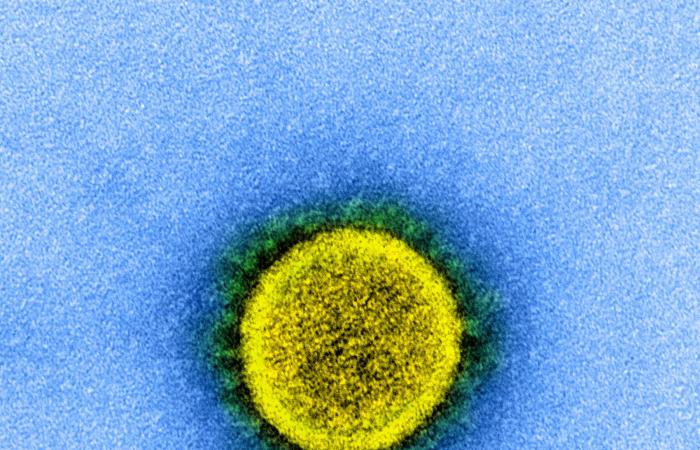With President Trump claiming he is immune to COVID-19 and isolated reports of re-infection surfacing, what is the truth about immunity to COVID-19?
To date, six cases of COVID-19 reinfection have been published, with various other unverified reports from around the world. While this is a comparatively small fraction of the millions of people known to be infected, should we be concerned? To solve this puzzle, we must first consider what we mean by immunity.
How immunity works
When we are infected with a pathogen, our immune system reacts quickly to contain the threat and minimize damage. Our first line of defense are immune cells called innate cells. These cells are usually not enough to turn off a threat. This is where a more flexible “adaptive” immune response comes into play – our lymphocytes.
Lymphocytes come in two main varieties: B-lymphocytes, which produce antibodies, and T-lymphocytes, which include cells that kill germ invaders directly.
Because antibodies in the blood can be easily measured, they are often used to indicate a good adaptive immune response. However, over time, the levels of antibodies in our blood decrease, but that doesn’t necessarily mean that protection is lost. We keep some lymphocytes that know how to deal with the threat – our memory cells. Memory cells are remarkably long-lived, patrolling our bodies and ready to take action when necessary.
Vaccines work by creating memory cells without the risk of potentially fatal infection. In an ideal world, creating immunity would be relatively easy, but it’s not always that easy.
Although our immune systems evolved to deal with a wide variety of pathogens, these germs also evolved to hide from the immune system. This arms race means that some pathogens like malaria or HIV are very difficult to treat.
Infections transmitted from animals – zoonotic diseases – also pose a challenge to our immune system as they can be completely new. The virus that causes COVID-19 is one such zoonotic disease that originates in bats.
COVID-19 is caused by a beta coronavirus. Several beta coronaviruses are already widespread in the human population – best known as the cause of the common cold. Immunity to these cold viruses isn’t as robust, but immunity to the more serious Mers and SARS conditions is more permanent.
Previous data on COVID-19 shows that antibodies can be detected three months after infection, although like SARS and Mers, antibodies gradually decline over time.
Of course, antibody levels are not the only indicator of immunity and say nothing about T lymphocytes or our memory cells. The virus that causes COVID-19 is structurally similar to SARS. Perhaps we can be more optimistic about a more permanent protective response – time will tell. Then how concerned should we be about reports of COVID-19 re-infection?
How concerned should we be?
The few case reports of re-infection with COVID-19 do not necessarily mean there is no immunity. Problems with testing can be responsible for some reports as “virus” can be detected after infection and recovery. The tests look for viral RNA (the genetic material of the virus), and viral RNA, which cannot cause infection, can be cleared from the body even after the person has recovered.
Conversely, false negative results occur when the sample used for testing does not contain enough viral material to be detected – for example because the virus is at a very low level in the body. Such obviously negative results can account for cases where the interval between the first and second infection is short. It is therefore extremely important to apply additional measures such as virus sequencing and immune indicators.
Reinfection can also occur with immunity, but is usually mild or asymptomatic as the immune response protects against the worst effects. Consistent with this, most verified cases of reinfection reported either no or mild symptoms. However, one of the most recently verified cases of re-infection – which occurred only 48 days after the initial infection – reacted more severely to re-infection.
What could be causing the worst symptoms the second time around? One possibility is that the patient did not show a robust adaptive immune response the first time, and that their initial infection was largely contained by the innate immune response (the first line of defense). One way to monitor this is to assess the antibody response, as the type of antibody detected can tell something about the time of infection. Unfortunately, the antibody results were not analyzed when the youngest patient was first infected.
Another explanation is that different strains of the virus caused the infections and subsequently affected immunity. Although genetic sequencing showed differences in the virus strains, it is not known whether this is equivalent to an altered immune recognition. Many viruses share structural features such that immune responses to one virus can protect against a similar virus. This has been suggested to explain the lack of symptoms in young children who frequently catch cold from beta coronaviruses.
However, a recently peer-reviewed study found that protection against cold-causing coronaviruses does not protect against COVID-19. In fact, antibodies that recognize similar viruses can be dangerous – which is responsible for the rare phenomenon of antibody-dependent disease exacerbation (ADE). ADE occurs when antibodies intensify viral infection of cells with potentially life-threatening consequences.
However, it should be emphasized that antibodies are only an indicator of immunity and in these cases we have no data on T lymphocytes or memory cells. In these cases, the need for standardized approaches is highlighted in order to collect the critical information for a reliable assessment of the risk of re-infection.
We’re still learning about the immune response to COVID-19 and each new piece of data helps us solve the mystery of this challenging virus. Our immune system is a powerful ally in the fight against infection, and only when we unlock it can we ultimately hope to defeat COVID-19.
Am I immune to the coronavirus if I already had it?
Provided by The Conversation
This article is republished by The Conversation under a Creative Commons license. Read the original article.
Quote: Coronavirus reinfection cases: What we know so far – and the important missing information (2020, October 16) were published on October 17, 2020 from https://medicalxpress.com/news/2020-10-coronavirus-reinfection-cases-vital -clues retrieved .html
This document is subject to copyright. Except for fair trade for the purpose of private study or research, no part may be reproduced without written permission. The content is provided for informational purposes only.
These were the details of the news what we know so far – and the crucial missing clues for this day. We hope that we have succeeded by giving you the full details and information. To follow all our news, you can subscribe to the alerts system or to one of our different systems to provide you with all that is new.
It is also worth noting that the original news has been published and is available at de24.news and the editorial team at AlKhaleej Today has confirmed it and it has been modified, and it may have been completely transferred or quoted from it and you can read and follow this news from its main source.





